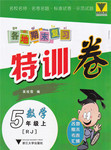题目内容
---- My God! Look, you have made the same mistake.
---- ____? It’s none of your business..
A. So what B. What for
C. What if D. What’s up
练习册系列答案
 中考解读考点精练系列答案
中考解读考点精练系列答案 各地期末复习特训卷系列答案
各地期末复习特训卷系列答案
相关题目
题目内容
---- My God! Look, you have made the same mistake.
---- ____? It’s none of your business..
A. So what B. What for
C. What if D. What’s up
 中考解读考点精练系列答案
中考解读考点精练系列答案 各地期末复习特训卷系列答案
各地期末复习特训卷系列答案